Cleveland, OH Pollen and Allergy Report for Summer 2023
Pollen Allergy Trends in Cleveland, OH
When is pollen lowest in Cleveland, OH?

February
Lowest month total PPM
Avg. PPM
When is pollen highest in Cleveland, OH?

April
Highest month total PPM
Avg. PPM
How does pollen in Cleveland, OH compare to Ohio?
Cleveland has a higher average PPM than the state of Ohio.
Cleveland yearly avg PPM:
Ohio yearly avg PPM:
How does pollen in Cleveland, OH compare to the USA?
Cleveland has a lower average PPM than the USA.
Cleveland yearly avg PPM:
USA yearly avg PPM:
Is pollen worse this year in Cleveland, OH?
Spring 2023 was worse than spring 2022.
Spring 2023 PPM:
Spring 2022 PPM:
Average PPM in Cleveland, OH
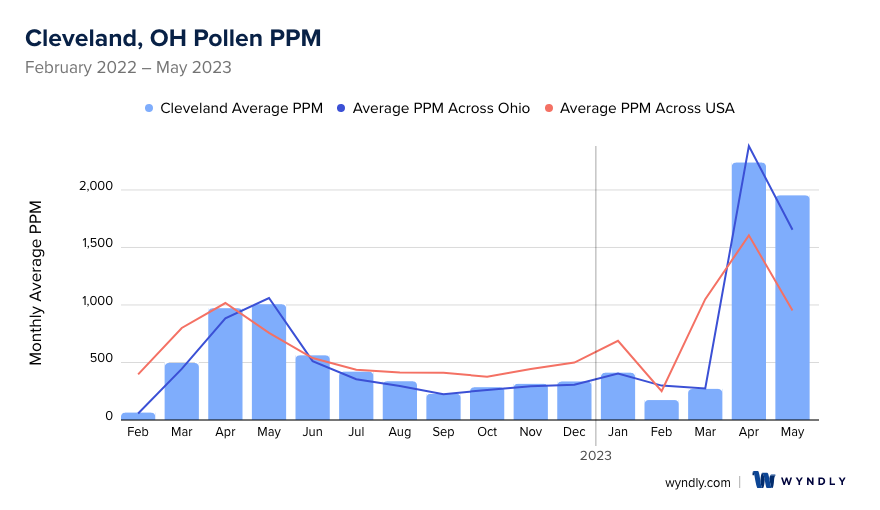

Cleveland, OH Pollen and Allergy Breakdown by Month
Grass
When is grass pollen highest in Cleveland, OH?
April has the highest grass pollen in Cleveland, OH with an average PPM of
When is grass pollen lowest in Cleveland, OH?
November has the lowest grass pollen in Cleveland, OH with an average PPM of
Tree
When is tree pollen highest in Cleveland, OH?
April has the highest tree pollen in Cleveland, OH with an average PPM of
When is tree pollen lowest in Cleveland, OH?
September has the lowest tree pollen in Cleveland, OH with an average PPM of
Weed
When is weed pollen highest in Cleveland, OH?
April has the highest weed pollen in Cleveland, OH with an average PPM of
When is weed pollen lowest in Cleveland, OH?
February has the lowest weed pollen in Cleveland, OH with an average PPM of
Cleveland, OH Pollen Monthly Breakdown by Pollen Type

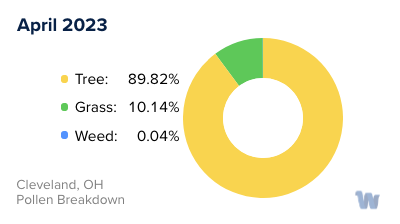
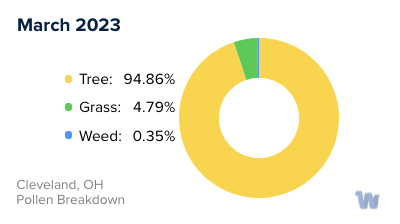


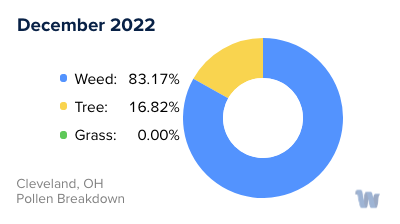
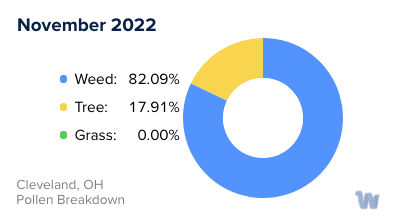
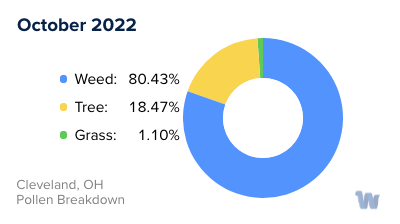
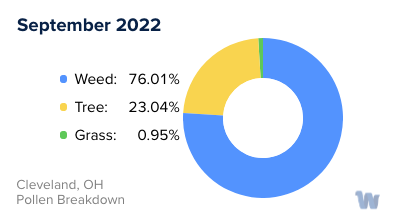
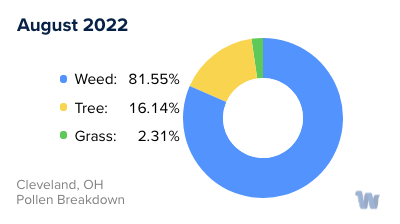
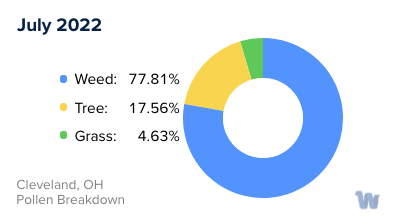


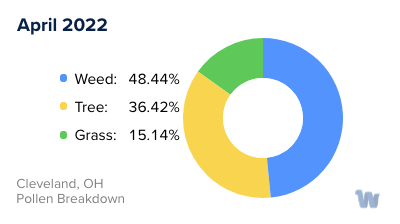
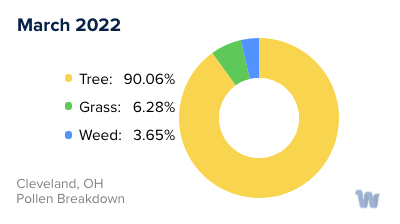

Pollen and Hay Fever in Cleveland, OH
Pollen allergies, often colloquially known as "hay fever," are a common issue faced by residents of Cleveland, Ohio. In fact, in certain seasons, the city transforms into a veritable "pollen capital," causing a surge in sneezing, runny noses, and itchy eyes among its citizens.
Pollen, the fine, powdery substance released by plants for fertilization, is the principal culprit behind these allergy symptoms. The types of pollen that trigger allergies are typically from trees, grasses, and weeds, rather than from showy flowers which rely on insects, not the wind, for pollination.
In Cleveland, tree pollen is the first to make its grand entry in early spring. From late March through May, trees such as oak, maple, and pine release their pollen, painting the city in a light dusting of yellow. An early morning walk might lead you to find your car or outdoor furniture blanketed in this fine dust, a sure sign that the pollen season is in full swing.
As spring transitions into summer, the grasses step in. From May to July, grass pollen, primarily from species like Timothy grass, Kentucky bluegrass, and ryegrass, dominates the air. The grassy expanses and lawns of Cleveland become potential sources of these microscopic allergens, making picnics a bit of a challenge for those with allergies.
Finally, in late summer and fall, weed pollen takes over. Ragweed, a ubiquitous plant found throughout Ohio, is particularly notorious. Starting in late August and lasting until the first frost, ragweed pollen fills the air, marking the final stage of Cleveland's pollen season.
In conclusion, understanding the types of pollen and their respective seasons can help Cleveland residents better anticipate and navigate the challenges of pollen allergies. While we're not delving into treatments or remedies in this piece, this knowledge is a fundamental first step in managing your symptoms and cohabitating peacefully with these tiny, yet potent particles of nature.

